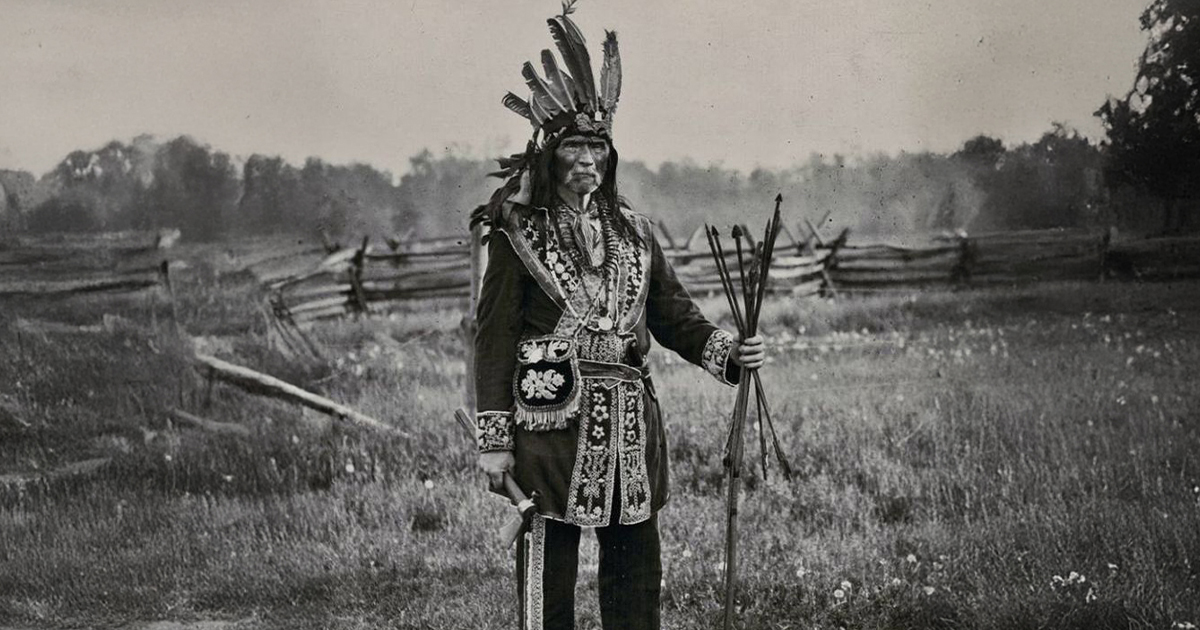Everything You Need To Know About The Chocolate Hills
Nestled on the island of Bohol is where you’ll find the Chocolate Hills. These geological wonders have become one of the most popular tourist attractions in the Philippines, both for their unique appearance and the fascinating myths about their origins.

Where Are The Chocolate Hills?
The Chocolate Hills spread across more than 50 square kilometers in Bohol, and island province in the Philippines. No one knows exactly how many there are, but scientists have counted at least 1,260 hills and there could be as many as 1,776.
 Joe Dordo Brnobic, Shutterstock
Joe Dordo Brnobic, Shutterstock
A World Wonder
Because of their unique color, the hills have become a famous tourist attraction in the Philippines. They are featured on the provincial flag and have even been called the eighth wonder of the world.
 Qaalvin, CC BY 3.0, Wikimedia Commons
Qaalvin, CC BY 3.0, Wikimedia Commons
Why Are They Brown?
The hills got their name from their appearance. In the dry season, the grass on the hills turns brown, making them look like gigantic chocolate truffles.
The Science
To geologists, the hills are categorized as “conical karst topography.” That’s just a fancy way of saying the hills are really old limestone deposits.
Over the millennia, rainfall carved the peaks and valleys that have that have become so famous on Bohol.
 Mark Levitin, CC BY-SA 4.0, Wikimedia Commons
Mark Levitin, CC BY-SA 4.0, Wikimedia Commons
They’re Very Old
The formation of the Chocolate Hills dates back to the Late Pilocene era, more than 2.5 million years ago. Because of this, the limestone deposits in the hills are full of marine fossils, like coral, mollusks, and algae.
 National Archives and Records Administration, Wikimedia Commons
National Archives and Records Administration, Wikimedia Commons
What Grows There?
While the hills themselves are covered in grass and ferns, the flat lands between the hills are used for growing important crops like rice. In recent years, though, these important crops and the hills themselves have been threatened by increasing quarrying activity in the area.
 P199, CC BY-SA 3.0, Wikimedia Commons
P199, CC BY-SA 3.0, Wikimedia Commons
Another Theory
While it is widely believed that the hills date back millions of years, there is still some debate over how they formed. Some self-published geologists and amateur enthusiasts have claimed that the hills were created by sub-oceanic volcanic eruptions, but there’s little evidence to support these theories.
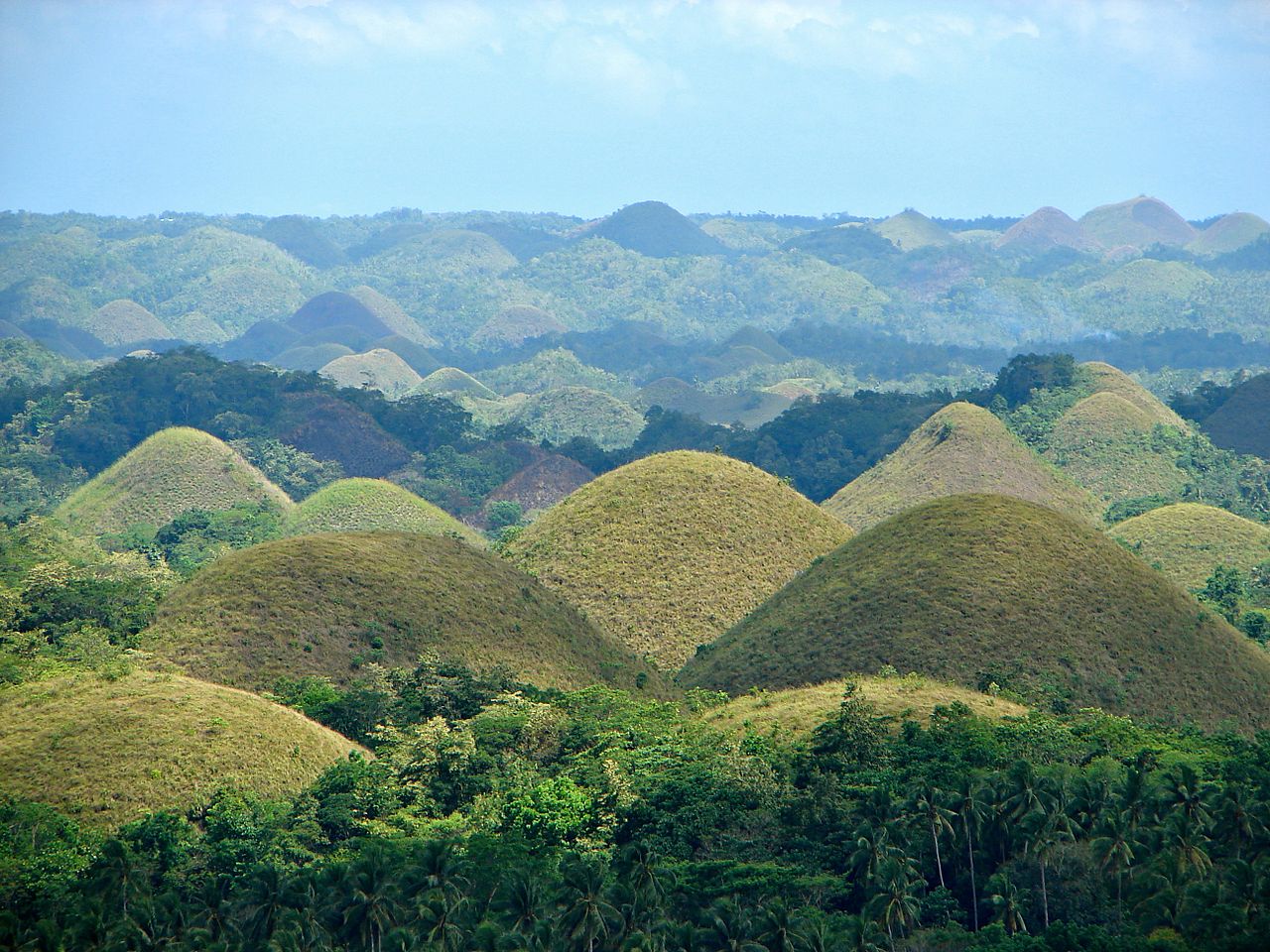 P199, CC BY-SA 3.0, Wikimedia Commons
P199, CC BY-SA 3.0, Wikimedia Commons
Origin Stories
Other stories about the origins of the hills are far more exciting than what the scientists tell us. According to one local legend, the hills were created after an epic fight between two giants.
They lived on opposite sides of the of the island, but when a rainy day may the ground unusually muddy, the giant from the north started a mud fight.
A Giant Legacy
The giants spent days throwing mud balls at each other until they finally started fist-fighting. In the end, the giants knocked each other down and both met their end that day. The remains of the mud balls that they’d thrown are said to have become the Chocolate Hills.
Sprung From Heartbreak
In another legend, the origins of the Chocolate Hills are even more tragic. It’s said that a young giant named Agoro fell in love with human woman named Aloya.
They were together for many years, until Aloya fell ill and perished. Agoro’s tears of grief pooled on the ground, becoming the Chocolate Hills.
The Giants’ Playground
In a third myth about the hills, the area used to be a playground for giant children. One day, the kids started a competition to see who could make the most mud cakes. They gathered up mud and left it under coconut shells to bake in the sun.
Eternal Mud Cakes
Before the mud cake contest ended and the children could decide who’d won, they were called back home.
When they finally went back to the playground, they were so impressed by all the cakes that they left them there. Eventually, the mud cakes became the Chocolate Hills.
How Tall Are The Chocolate Hills?
Despite their big reputation, the Chocolate Hills are quite short. They range from just 100 to 165 feet tall, with the largest hill being an anomaly at 395 feet tall.
Even with their small stature, though, the hills can be seen from the surrounding towns of Carmen, Batuan, Bilar, and Sagbayan.
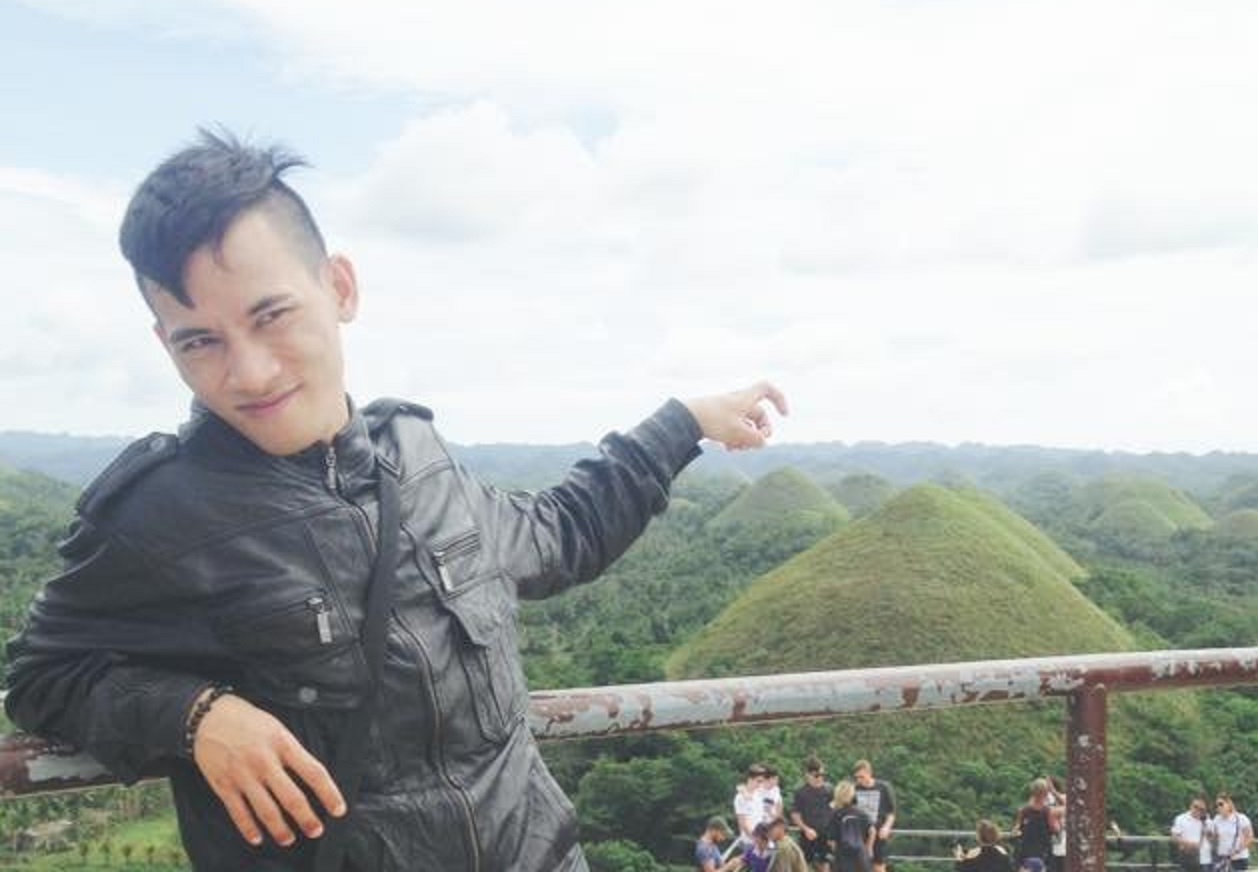 Gelofritzie, CC BY-SA 4.0, Wikimedia Commons
Gelofritzie, CC BY-SA 4.0, Wikimedia Commons
When Is The Best Time To Visit?
Bohol is a tropical climate, so if you want to experience the Chocolate Hills without slogging through mud and torrential rainfall, you’ll need to visit during the dry season, which lasts from December until May.
April is usually the best time to go since in addition to seeing the hills, the weather will be perfect for other fun activities, like swimming and snorkeling.
 Vyacheslav Argenberg , CC BY 4.0, Wikimedia Commons
Vyacheslav Argenberg , CC BY 4.0, Wikimedia Commons
How To Get There
The easiest way to get to the Chocolate Hills is by taking a ferry from Cebu City to Bohol’s capital, Tagbilaran. It’ll take a couple hours each way, but it’s well worth it and still leaves lots of time to do some sightseeing on the island.
 Øyvind Holmstad, CC BY-SA 4.0, Wikimedia Commons
Øyvind Holmstad, CC BY-SA 4.0, Wikimedia Commons
Flying To The Hills
Flying is another convenient way of getting to the Chocolate Hills. There are various flights from Manila and Mindanao. Once you land at Bohol-Panglao Airport, there are lots of buses and ride services to get to the hills.
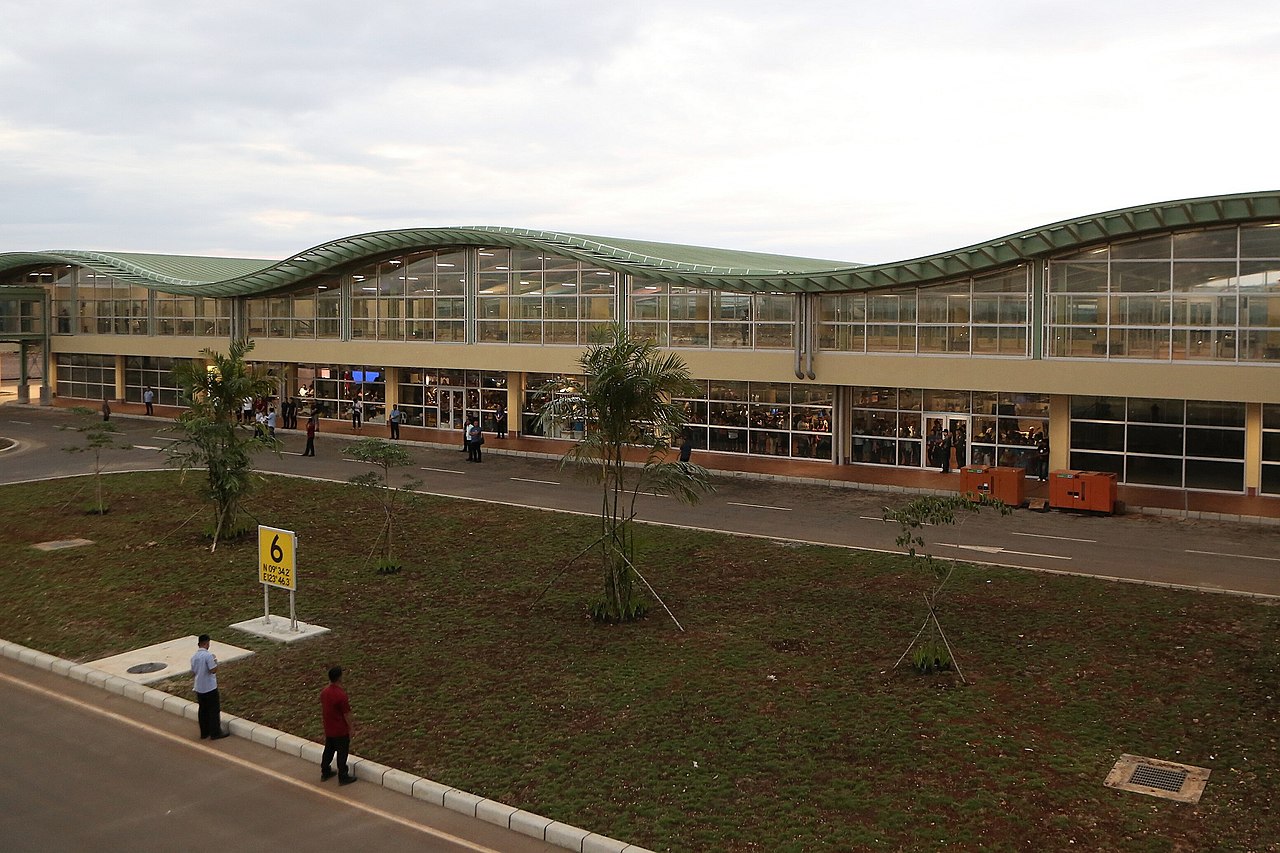 ALBERT ALCAIN/PRESIDENTIAL PHOTO, Wikimedia Commons
ALBERT ALCAIN/PRESIDENTIAL PHOTO, Wikimedia Commons
Can You Climb The Hills?
While people can explore the terrain near and at the base of the hills, you’re not allowed to climb on the hills. There are designated viewing points for you to see these impressive landmarks without trampling on the vegetation that makes them so noteworthy.
 Hariboneagle927, CC-BY-2.0, Wikimedia Commons
Hariboneagle927, CC-BY-2.0, Wikimedia Commons
The Chocolate Hills Complex
The town of Carmen is where you’ll find the most popular viewing point for the hills: The Chocolate Hills Complex. The complex is built into one of the hills and after a climb of 214 steps, you’ll reach a 360-degree overlook that provides an incredible view of this renowned landscape.
Another Point Of View
If you want to see the Chocolate Hills from somewhere a little less crowded, head over to the Sagbayan Peak. Also built into one of the hills, it’s just a few kilometers away from the Chocolate Hills Complex in Carmen but is far more spacious.
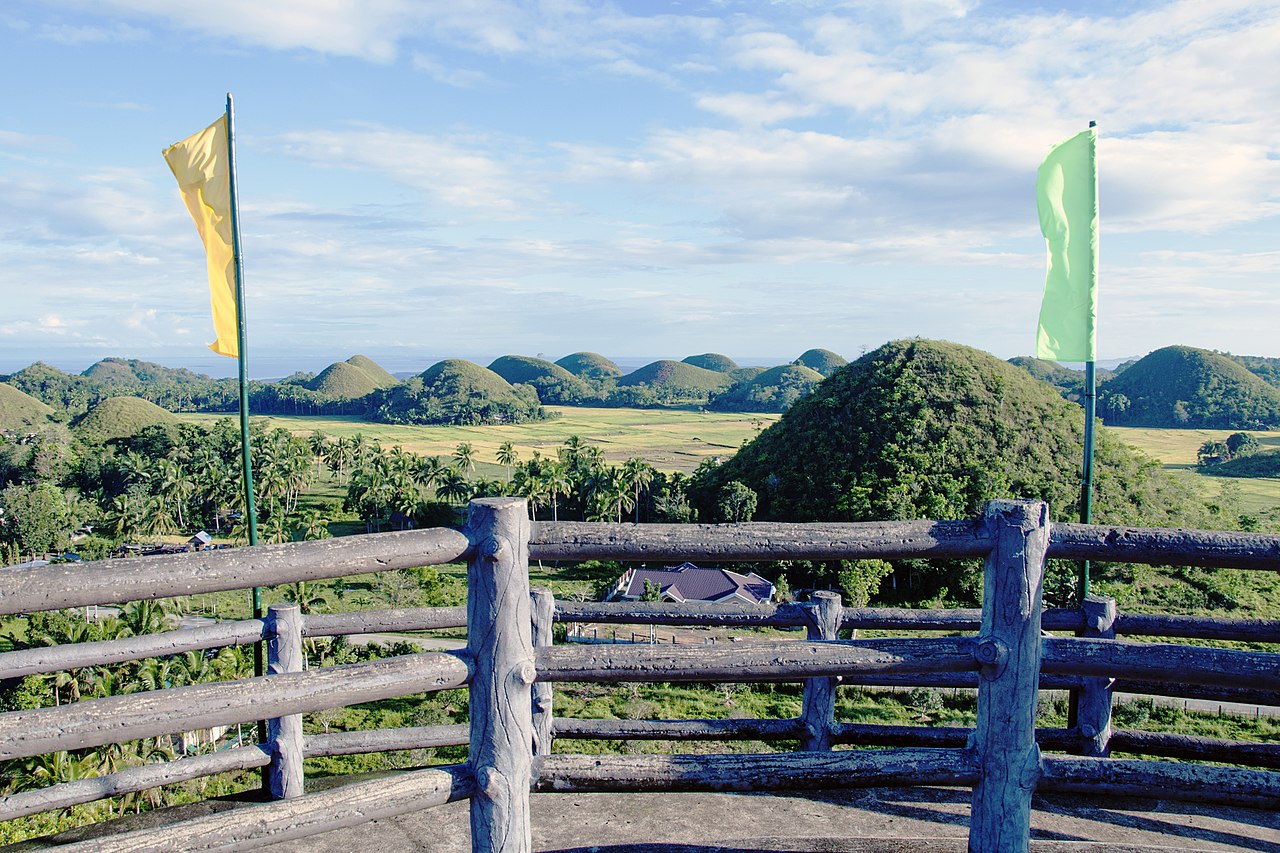 Francisco M. Pajares, Jr., CC BY-SA 4.0, Wikimedia Commons
Francisco M. Pajares, Jr., CC BY-SA 4.0, Wikimedia Commons
A Great Place To Stay
Both viewpoints for the Chocolate Hills are resorts, so in addition to seeing these world wonders, you can also grab a bite to eat, pick up some souvenirs at the gift shop, or book a few nights for some extra sightseeing.
 Patrickroque01, CC BY-SA 4.0, Wikimedia Commons
Patrickroque01, CC BY-SA 4.0, Wikimedia Commons
The Adventure Park
For an exciting adventure and another breathtaking view of the hills, head over to the Chocolate Hills Adventure Park. There you can experience the thrill of zip-biking and traditional ziplining with a view of the legendary hills.
 Fars Media Corporation, CC BY 4.0, Wikimedia Commons
Fars Media Corporation, CC BY 4.0, Wikimedia Commons
Riding Through The Hills
If you’re looking to step your sightseeing up a notch, get closer to the hills with an exciting ATV ride through the trails that weave in between them. You can choose from wide range of guided tours or book an ATV on your own for a solo adventure.
A National Treasure
While their status as a world wonder may be up for debate, the Chocolate Hills are still one of the few National Geological Monuments in the Philippines. The hills have been put forward to be included on the UNESCO World Heritage List.
 Pi3.124, CC BY-SA 4.0, Wikimedia Commons
Pi3.124, CC BY-SA 4.0, Wikimedia Commons
Are There More Hills Like This?
Karst hills like the Chocolate Hills can be found in other parts of the Philippines, including parts of Cebu, Siquijor, and Masbate. However, these ranges are far smaller than the Chocolate Hills.
 Christopher Sundita, CC BY-SA 3.0, Wikimedia Commons
Christopher Sundita, CC BY-SA 3.0, Wikimedia Commons
Threats Against The Hills
While the Chocolate Hills are beloved by many in the Philippines and have historically been protected by the government, the area has found itself under attack in recent years.
Land-use disputes led to the government amending the protective laws in 2002, so that sections of land in and around the hills could be developed by the province.
 Hariboneagle927, CC-BY-2.0, Wikimedia Commons
Hariboneagle927, CC-BY-2.0, Wikimedia Commons
Fighting For The Hills
Before the Chocolate Hills were designated as a National Geological Monument in 1988, several of the hills were classified as disposable or private lands. Many farmers and locals in the area felt this was a suppression of their own land rights, which eventually culminated in a civil uprising.
 Pi3.124, CC BY-SA 4.0, Wikimedia Commons
Pi3.124, CC BY-SA 4.0, Wikimedia Commons
The Chocolate Hills' Defenders
The uprising was led by the New People’s Army, a group of Maoist guerillas. They changed their name to the Chocolate Hills Command and weren’t afraid to face off with government forces.
 Vyacheslav Argenberg, CC BY 4.0, Wikimedia Commons
Vyacheslav Argenberg, CC BY 4.0, Wikimedia Commons
Modern Threats
While the days of guerilla combat are over in Bohol, the Chocolate Hills are still under attack.
Philippines’ Department of Environment and Natural Resources (DENR) are tasked with protecting the region, but in recent years, they’ve contributed to the mining and quarrying operations that threaten the Chocolate Hills.
 Wikityrey, CC BY-SA 4.0, Wikimedia Commons
Wikityrey, CC BY-SA 4.0, Wikimedia Commons
A Growing Problem
No one knows why, but the DENR has granted permits to mining companies that seek to profit off the natural resources within the Chocolate Hills.
The problem has become so pronounced that the Bohol provincial is hoping to take over the legal jurisdiction of the Chocolate Hills, to protect the land masses, but this process is costly and hasn’t made much headway.
Final Thoughts
The Chocolate Hills stand as a testament to the extraordinary wonders of our planet. For many years, they have stood protected but as the modern world continues to advance on the planet's natural paradises, these iconic landmarks find themselves under increasing threats from mining companies.
Luckily, the Chocolate Hills are still revered and protected by the Bohol government, and there's hope that these unique land masses will be around to inspire travelers for many years to come.














